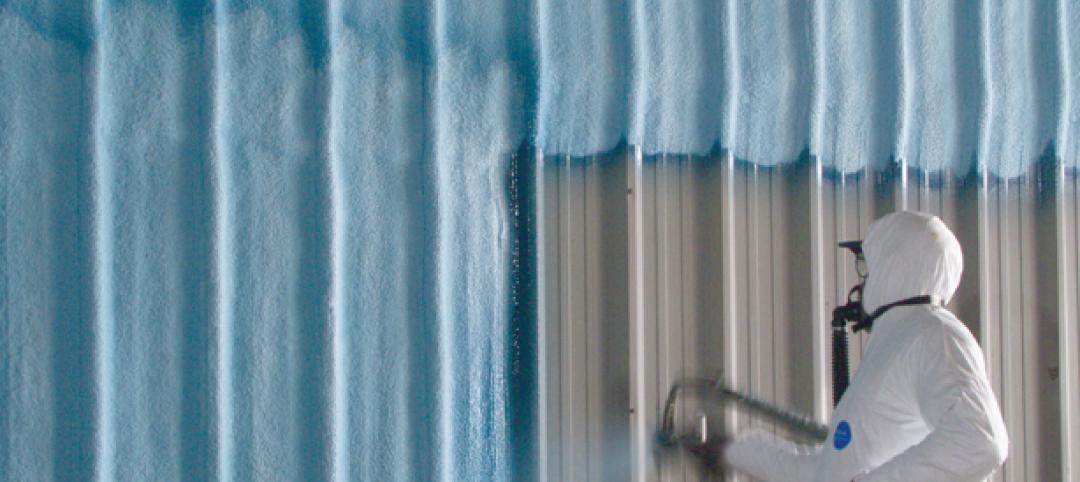In response to manufacturer demand, the Health Product Declaration Collaborative, together with GreenCE, GreenCircle, NSF International, PE International, SCS Global Services, ToxServices LLC, and UL Environment, is developing an official protocol for third party verification of HPDs. A similar process is underway to define expectations for quality assurance consulting.
The Health Product DeclarationTM (HPDTM) offers a framework for manufacturers to list product ingredients and associated health information. It also provides a context towards a better understanding of the variables in existing inventory systems.
“Establishing common criteria for third party verification and quality assurance consulting is critical to advance the collective knowledge of the building industry, particularly as questions move up the supply chain,” said Eden Brukman, Technical Director of the HPD Collaborative. “For these services to be successful, consistency is key.”
Alpar Architectural Products LLC, ASSA ABLOY Door Security Solutions, Bradley Corporation, Cosentino Group, Forbo Flooring Systems, GAF, Interface, Mohawk Group, Nydree Flooring, PROSOCO, and Teknion are already working with one or more of the provisional third party verifiers and quality assurance consultants so that, when released in Spring 2014, the official protocols will be based on functional experience and the best standard of practice. This initial discovery phase of documenting the necessary methodology, credentials, and training will run through February 2014. Additional manufacturers are also encouraged to participate.
“Decision makers are looking for more information than ever before about the products they specify, and we know that they see value in that information being backed by third-party substantiation,” said Sara Greenstein, President, UL Environment. “UL Environment is proud to participate in this pilot with the HPD Collaborative to ensure quality and consistency in the verification process, and to offer manufacturers a way to meet new market demands for third-party verified Health Product Declarations.”
“Creating a third-party review process for HPDs is a necessary step in providing accurate material content data, and GreenCircle is proud to be at the forefront of this movement,” said Tad Radzinski, Certification Officer.
Dr. Margaret Whittaker, Managing Director and Chief Toxicologist of ToxServices LLC added: “The HPD is a valuable tool for all levels of the supply chain and an important first step in a manufacturer’s commitment to product sustainability. ToxServices is pleased to help product manufacturers complete their HPDs and to provide confidential third-party services that facilitate the reporting of proprietary formulation information.”
"The HPD is a much needed step forward for the construction industry,” said Tara Blank, Ph.D. of Elixir Environmental. “GreenCE and Elixir Environmental are excited to be involved in the pilot program for development of a third party verification system for The HPD, which we expect will act to further increase transparency and accountability of building products."
Teresa McGrath, Supervising Toxicologist for NSF Green Chemistry Programs agreed, “HPDs are an important addition to the expanding portfolio of product information. Along with environmental product declarations (EPDs) and multi-attribute sustainability standards, HPDs will allow specifiers, buyers, and end users to get a standardized set of third-party verified, transparent data and information about the materials and any potential hazards associated with ingredients in building products. NSF is committed to helping the business products industry meet the HPD requirements and providing third-party validation services.”
“Transparency and disclosure are now market requirements. Providing software solutions and technical support for the development of protocols and various types of product declarations and public reports is the core of our business, and has been for 20 years,” said Heather Gadonniex, Business Development Director, PE INTERNATIONAL. “We are pleased to lend our collective expertise to drive continuous improvement of the HPD standard and ensure our clients’ interests are represented throughout the process.”
“SCS Global Services is committed to the continual improvement of the HPD process to ensure the highest level of chemical transparency and disclosure,” said Stowe Beam, Managing Director of Environmental Certification Services. “As a trusted leader in environmental certification, we are pleased to offer third-party verification of HPDs and inform the HBD Collaborative pilot to develop a standardized verification system.”
About Health Product Declaration Collaborative
The Health Product Declaration Collaborative is a customer-led organization committed to the continuous improvement of the building industry’s performance through openness and innovation in the product supply chain. The HPD Collaborative created and supports the Health Product Declaration (HPD), an objective tool for the accurate reporting of product contents and how each ingredient relates to the bigger picture for ecological health. The HPD helps us impartially define the critical information needed by manufacturers, suppliers, building designers, specifiers, owners, and users. It is freely available at www.hpdcollaborative.org.
Related Stories
| Sep 27, 2011
Steel Joist Institute announces October webinar on Open Web Steel Joists
Webinar participants can earn 0.15 CEUs or 1.5 PDHs.
| Sep 14, 2011
More than 200 events planned for third annual SteelDay September 23
Special events in major cities including New York City, Chicago, Washington, D.C., and more.
| Sep 12, 2011
Construction waste management
Best practices for an environmentally optimized job site.
| Sep 12, 2011
Morgan Thermal Ceramics’ system for installing grease duct enclosures achieves UL listing
Updated installation results in 33% space savings.
| Apr 12, 2011
Spray Foam Applications on the Rise
New uses for spray polyurethane foam enable Building Teams to achieve greater longevity and sustainability in their projects.
| Feb 15, 2011
New 2030 Challenge to include carbon footprint of building materials and products
Architecture 2030 has just broadened the scope of its 2030 Challenge, issuing an additional challenge regarding the climate impact of building products. The 2030 Challenge for Products aims to reduce the embodied carbon (meaning the carbon emissions equivalent) of building products 50% by 2030.
| Feb 3, 2011
Duro-Last Roofing, Inc. Adds Standing Seam Metal Product Line
Duro-Last Roofing, Inc. is adding a standing seam metal product line to its roofing system offerings. With five profiles and more than thirty colors to choose from, the new line will enable authorized Duro-Last contractors to provide a standing seam roofing installation to meet virtually any aesthetic requirements.
| Jan 19, 2011
Large-Scale Concrete Reconstruction Solid Thinking
Driven by both current economic conditions and sustainable building trends, Building Teams are looking more and more to retrofits and reconstruction as the most viable alternative to new construction. In that context, large-scale concrete restoration projects are playing an important role within this growing specialty.
| Jan 7, 2011
How Building Teams Choose Roofing Systems
A roofing survey emailed to a representative sample of BD+C’s subscriber list revealed such key findings as: Respondents named metal (56%) and EPDM (50%) as the roofing systems they (or their firms) employed most in projects. Also, new construction and retrofits were fairly evenly split among respondents’ roofing-related projects over the last couple of years.














